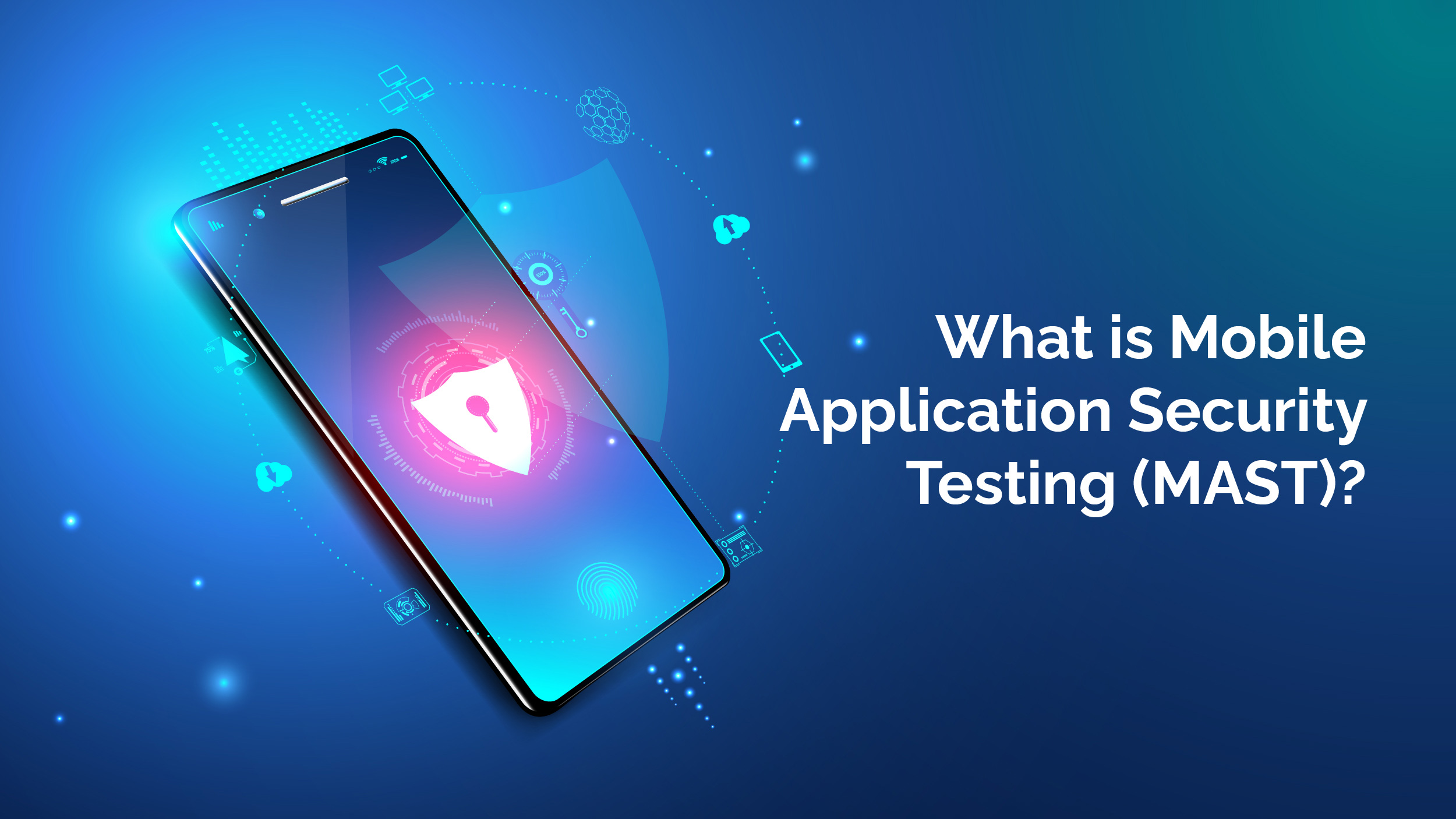In the ever-evolving dance between technology and convenience, mobiles have taken the spotlight, gracefully outshining the once mighty desktops. The year 2022 alone saw 255 billion app downloads. In addition, in the third quarter of 2022, users typically spent $4.86 on mobile apps.
The use of mobile apps is growing. Mobile app development companies are now proliferating as a result of this. The creation of mobile applications is made easier by a number of futuristic technologies, including blockchain, AR/VR, and metaverse.
However, as the number of mobile apps has expanded, so too has the complexity with which they can be attacked.
As we move forward in this blog, we’ll talk about mobile application security, its significance, typical dangers to mobile application security you should watch out for, and different ways to mitigate these threats.
What is Mobile Application Security?
High-value mobile applications and your digital identity are protected from fraud in all its forms through the practice of mobile app security. This covers interference such as keylogging, malware, reverse engineering, tampering, and other types of manipulation or interference. Technology-based solutions like mobile app shielding are part of a full mobile app security plan, together with corporate procedures and best practices for use.
For the majority of their digital tasks, more users than ever before prefer mobile applications to traditional desktop ones. Users spend 54% of their digital media time on mobile devices in the U.S. alone in 2015, actively using mobile apps. Such applications have access to a considerable amount of user data, much of it sensitive and needs to be secured against unauthorized access.
What is Mobile Application Security Testing (MAST)?

In terms of application security testing, mobile apps are the subject of mobile application security testing (MAST). Static analysis, dynamic analysis, and penetration testing are all used in a thorough MAST strategy to identify areas of risk in mobile apps.
Development teams can reduce security risks before publishing their mobile apps by using automated MAST solutions to scan application code for potential vulnerabilities. Because of its capability for early detection, MAST is regarded as one of the most significant mobile application security best practices.
What are the Mobile Application Security Solutions?
Mobile application security solutions are a set of measures and techniques implemented to protect mobile applications and the data they handle from potential security threats and vulnerabilities. These solutions aim to ensure the confidentiality, integrity, and availability of sensitive information, prevent unauthorized access, and mitigate risks associated with mobile app usage. Here are some common mobile application security solutions:
1. Secure Code Development
During the development process, applying secure coding techniques aids in locating and minimizing potential risks. This entails using secure data storage methods, input validation, and coding standards.
2. Encryption
Data encryption prevents unauthorized parties from accessing the data even if it is intercepted and ensures that data is at rest (stored on the device) and in transit (during communication). For this, encryption algorithms like AES (Advanced Encryption Standard) are frequently employed.
3. User Authentication
Strong user authentication methods, including passwords, PINs, biometrics (fingerprint, face recognition), and two-factor authentication (2FA), give an additional layer of protection and lower the risk of unauthorized access to critical data.
4. App Sandboxing
Application sandboxing separates apps from the rest of the device’s resources to restrict their access to private information and stop malicious applications from interfering with other apps.
5. Secure Network Communication
In order to secure data transmission between a mobile app and backend servers, secure communication protocols like HTTPS (HTTP Secure) and SSL/TLS (Secure Sockets Layer/Transport Layer Security) are used.
How to Solve Android Mobile Application Security Issues?

The growing security threats associated with mobile apps, especially those related to preventing data breaches, are one of the primary concerns for mobile app development.
A survey found that every day in 2018, over 10,573 malicious mobile apps were blocked.
Due to developers’ continued use of risky coding practices, it is now not only simpler to create and deploy apps but also simpler to compromise the security of mobile applications.
Android apps are more severely affected than iTunes ones, according to statistics on mobile app hacking. This is mostly due to Android’s open-source environment. Being open-source, Android’s source code can be used (or modified) by anybody for the development of apps.
But how can you address these threats to mobile security?
The top threats to mobile app security are listed below, along with solutions:
1. Insecure Communication
After confirming the endpoint server’s identification, only then should a secure connection be established. Make sure to implement SSL/TLS on the transport channels that the mobile app will use to transmit sensitive data, such as session tokens, credentials, etc. when you apply it to your mobile application.
Utilize reliable, industry-standard cipher suites with suitable key lengths. In addition, avoid permitting certificates that are self-issued and think about utilizing certificates that have been signed by a reputable CA provider. For sensitive applications, you want to also take certificate pinning into account.
Remember to use their TLS versions when a mobile application performs a task utilizing a WebKit/browser to take into account third parties like social networks.
2. Client Code Security
Continually use secure coding techniques that do not result in susceptible code. When employing buffers, be sure to verify that the length of the incoming data does not exceed the size of the target buffer.
Automate the process of identifying memory leaks and buffer overflows using external static analysis tools. Additionally, make sure that fixing memory leaks and buffer overflows takes precedence over other code quality concerns since they tend to increase the risk to mobile security and are simple to exploit.
Utilize a static analysis-focused security firm to examine your code and find these security flaws and dangers.
3. Insufficient Authentication and Authorization Controls
You may boost mobile security in a number of ways by implementing correct authentication and authorization:
- Make sure that server-side processing of authentication requests occurs. The information should be put into the mobile device after successful authentication. As a result, data will only be loaded upon successful authentication.
- If client-side data storage is necessary, protect your data using encryption and securely use the user’s credentials.
- Verify the responsibilities and permissions of authorized users exclusively utilizing data from backend systems in order to develop strong authorization mechanisms.
- A user’s identity should be verified via multi-factor authentication. One-time passwords, security questions, etc. are all options.
4. Poor Encryption
Make sure you use cutting-edge encryption techniques that are regarded as being reliable by the security community. Utilize the encryption APIs that are offered by your mobile platform.
Consider using many levels of encryption so that even if an attacker obtains the decryption key for one layer, they still need to break into two other layers of encryption. Additionally, make sure the encryption keys are kept safe. This is essential.
5. Reverse Engineering
Limiting client-side capabilities and exposing additional functionality through web services on the server side are both excellent ways to minimize reverse engineering of mobile apps. You obfuscate that code base using professional obfuscators once the functionality has been reduced to the absolute minimum required.
Additionally, stay away from keeping your API keys in assets, shared resource files, or any other location that is open to outside access. To protect the API key for your mobile app, use NDK or public/private key exchange.
Final Thoughts on Mobile Application Security
Making sure there are strong security measures in place is crucial at a time when mobile applications have largely taken over our daily life. In order to protect user data, prevent unauthorized access, and reduce risks, mobile application security solutions are essential.
Keep in mind that maintaining mobile application security requires continual effort. To find and fix vulnerabilities, adjust to changing threats, and give user data safety a top priority, a proactive approach is necessary. By giving mobile application security a top priority, we may continue to employ mobile technology to its fullest capacity while upholding consumers’ trust and confidence in the online environment.




